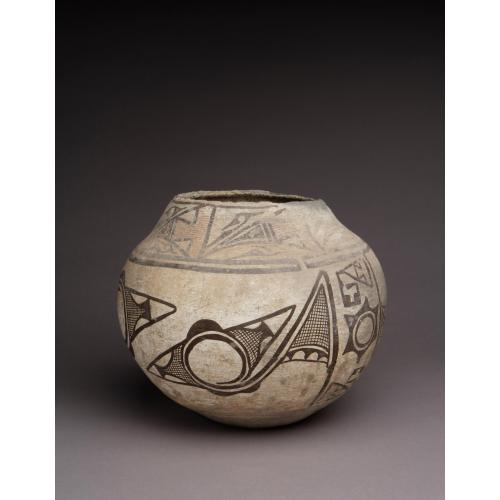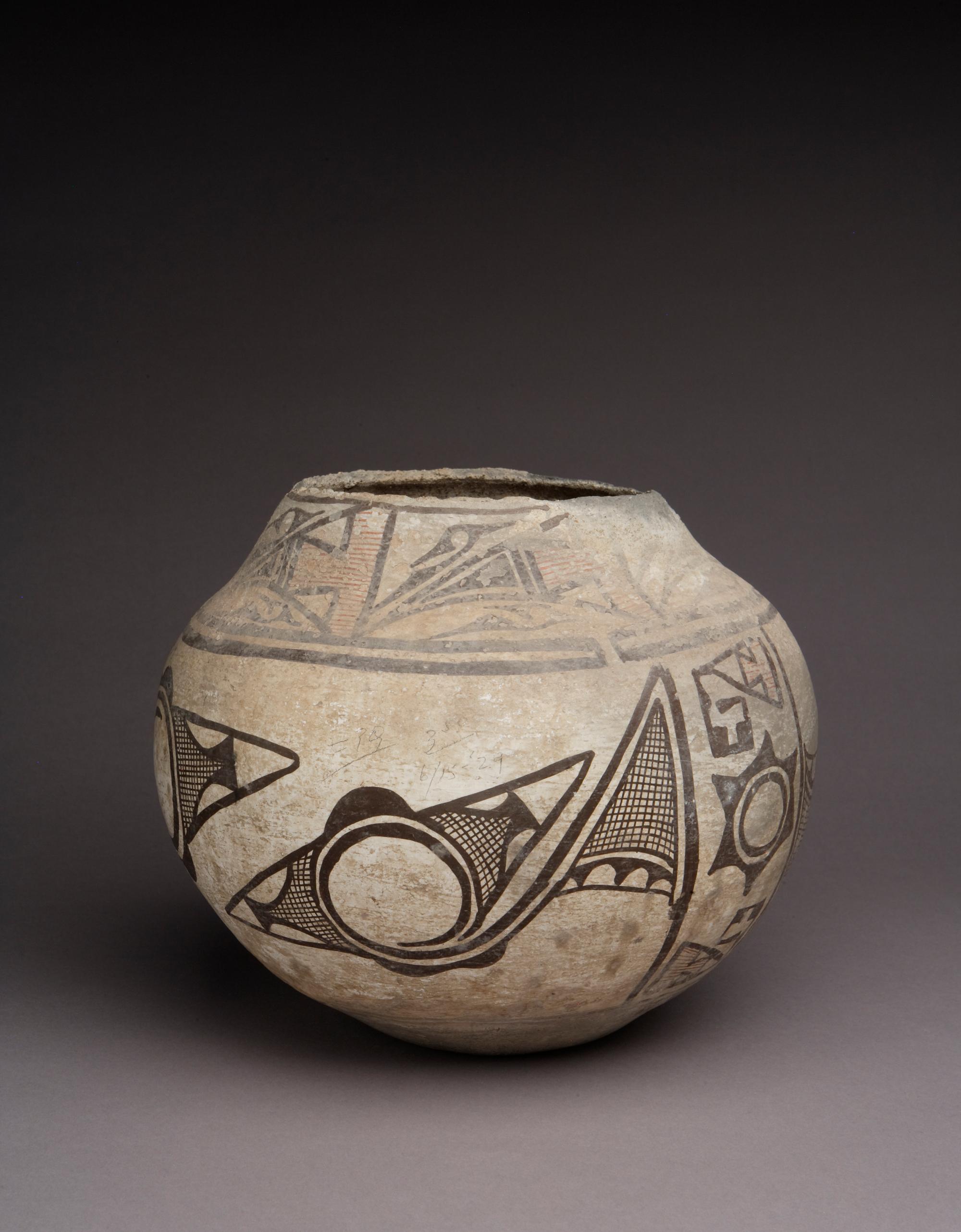
Photograph by Addison Doty. Copyright 2010 School for Advanced Research.
Water jar | K'yabokya de'ele
Date: c. 1890
Artist or Maker: Unknown
Dimensions:
Dimensions: 31.8 × 26.7 cm (12 1/2 × 10 1/2 in.)
Weight: 2.7 kg (6.05 lb.)
Medium: clay | paints
Place Made:
Zuni Pueblo, McKinley County, New Mexico, Southwest, United States, North America
Object Number: IAF.1365
Not on view
Tribal Collection Review RemarksJim Enote and Octavius Seowtewa during collection review visit December 7 and 8, 2010 (Events Record “Collection Review: Zuni Tribe, Review 5”): The rim and a portion of the neck of the jar are quite eroded. This may have been due to the consistency of the clay used, which seems to have a lot of sand in it. Mild acids and corrosive minerals precipitating out of the water that dripped on the rim and neck may have caused the erosion. The neck design contains birds, tails, clouds, and red rain hatching. The pattern repeats around the neck. A thick, black, double line with a break separates the neck and body bands. The body design has birds with wings and tails, cloud designs, and six-petaled flowers. The base is solid black and shows very little wear. The amount of erosion on the rim and neck, compared to the small amount of wear on the base, is curious. There are repairs on the interior of the jar, which appear to have been done with clay which appears to have been fired. The jar is heavy for its size. “PX 107” is written on the interior of the jar and crossed out. It also has some numbers written on the exterior. They are difficult to read, but one of them is “355.” Someday it would be interesting to research the Ph of water from various Zuni-area water sources and the effect it would have on ceramics made with clays from the region.
The word for a water jar in Zuni is “k'yabokya,” which translates to “water container” in English. The intended use for these jars was to store and carry water, but they could also be used to store other items.
In Collection(s)
Bibliography:
Pueblo Designs
- Pg. 43
- Fig. Plate XIII, 4
The Indian Arts Research Center, in collaboration with Native American community scholars, strives to present accurate collections records. Records may be updated as new information becomes available and is reviewed with the Native American community having cultural affinity to particular items. Please write to iarc@sarsf.org if you have questions or concerns related to the documentation.
